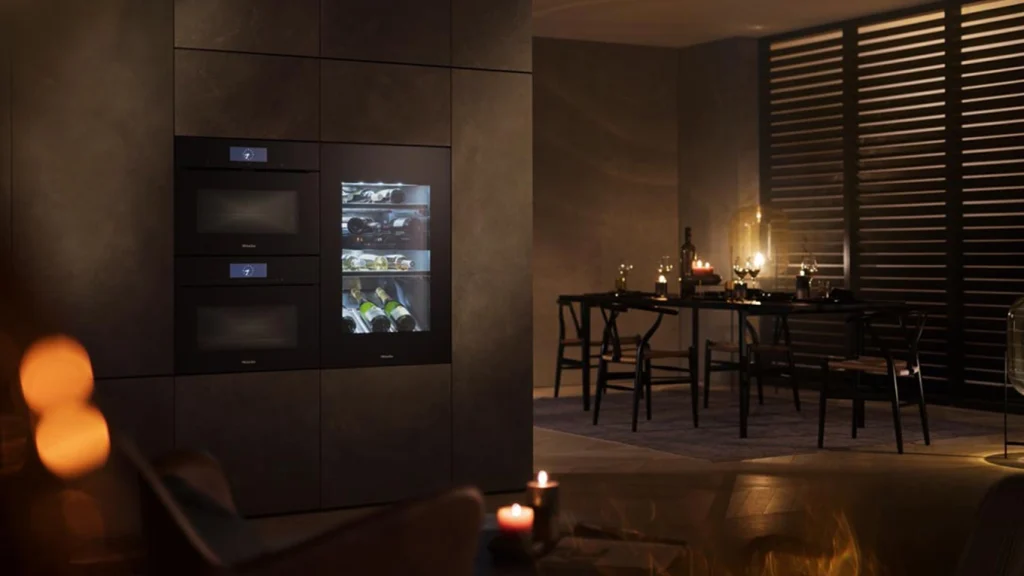
Let’s be honest. The modern home hums, whirs, and rumbles. For some, it’s the sound of productivity and comfort. But for those of us who are noise-sensitive—or have a sleeping baby, work night shifts, or simply crave genuine quiet—that constant background noise can be a genuine source of stress. It frays nerves and turns your sanctuary into a source of irritation.
Well, here’s the good news: you don’t have to choose between clean dishes and your peace of mind. The market for quiet home appliances has exploded, offering products designed to do their job with a whisper, not a roar. This guide is your roadmap to finding them.
Understanding the “Quiet” in Quiet Appliances: Decibels Demystified
First things first, let’s talk about how we measure sound. Decibels (dB) are the unit, but what do the numbers actually mean? It’s not a linear scale; a 10 dB increase sounds about twice as loud to the human ear.
| Sound Reference | Decibel Level (dB) |
| Rustling Leaves | 20-30 dB |
| Quiet Library | 30-40 dB |
| Normal Conversation | 60 dB |
| Vacuum Cleaner (standard) | 70-80 dB |
| Blender | 80-90 dB |
For an appliance to be considered truly “quiet,” you’re generally looking for something under 50 dB. At that level, it’s a soft hum that easily fades into the background, even in an open-plan living space. That’s the sweet spot for noise-sensitive households.
The Usual Suspects: Taming the Noisiest Appliances in Your Home
Some appliances are just… notorious. Let’s break down the biggest offenders and what to look for in a quieter model.
1. Dishwashers: The Kitchen’s Main Antagonist
An old dishwasher can sound like a rockslide. Newer models, thankfully, are a different breed. The key is insulation and motor technology.
- Look for a decibel rating. Any model under 45 dB is excellent. The quietest dishwashers on the market now operate in the 38-42 dB range—that’s quieter than most refrigerators.
- Seek out sound-dampening features. Look for terms like “full insulation,” “blankets,” or “sound-absorbing tubs.” A solid front panel, as opposed to a perforated one, also helps muffle the sound.
- Brushless motors are your friend. A brushless DC motor is inherently quieter and more efficient than traditional motors. It’s a game-changer.
2. Washing Machines: The Spin Cycle Shake-Up
That loud “ka-chunk, ka-chunk” during the spin cycle? You can live without it. The type of washer makes a huge difference.
Front-Load vs. Top-Load: Honestly, if quiet operation is your goal, a front-loading washing machine is almost always the superior choice. They use a tumbling action instead of an agitator, which is much gentler and, you know, quieter. They also tend to have higher spin speeds, which extract more water, leading to shorter—and quieter—dryer times.
Look for models with a direct-drive motor. It’s a simpler system with fewer moving parts, which translates to less vibration and noise. Many also come with “quiet” or “night” modes that further reduce the decibel level.
3. Refrigerators: The Hum That Never Ends
The fridge is the heartbeat of the kitchen. But when that heartbeat is a loud, intermittent groan, it can drive you up the wall. The compressor is the main culprit.
Newer models with inverter compressors are a revelation. Instead of constantly turning on and off at full power, they adjust their speed smoothly to maintain temperature. This eliminates that jarring “click-HUUUUM” and replaces it with a nearly inaudible, consistent hum. It’s a bit like the difference between a car jerking along in stop-and-go traffic versus cruising steadily on the highway.
Beyond the Big Three: Other Quiet Appliance Considerations
It’s not just the major players. Smaller appliances can create a cacophony all their own.
- Range Hoods: You need one to clear smoke and odors, but some sound like a jet engine. Look for models that specify a low sones rating (the other measurement for fan loudness). A rating of 1-3 sones is very quiet. Also, check for a “low-speed” setting you can use for everyday ventilation.
- Microwaves: The beeps are often the most annoying part! Some brands now offer models where you can turn the sounds off or lower their volume. For the fan and turntable noise, more insulation is key.
- Portable Air Purifiers & Heaters: For these, the fan is everything. Look for devices that advertise a “sleep mode” which drastically reduces fan speed and noise. Brushless DC motors, again, are a hallmark of quieter operation.
Smart Shopping: How to Vet for Quiet When You’re in the Store
Spec sheets can be confusing. Here’s a practical guide to cutting through the marketing speak.
- Decibels are your first filter. Use the chart above. For dishwashers and laundry, aim for the low 40s. For fridges, the 30s are possible.
- Read reviews with a purpose. Search the reviews for keywords like “quiet,” “loud,” “noise,” and “sound.” Real-world user experience is invaluable.
- If you can, listen for yourself. Some appliance showrooms have display models you can turn on. Put your ear to the door. Feel for vibration.
- Don’t forget installation. A perfectly quiet dishwasher can be loud if it’s installed poorly. Ensure it’s level, and consider using vibration-dampening mats or pads, especially for washers and dryers.
The Final Word: Investing in Silence
Choosing quiet home appliances isn’t just a luxury for the noise-sensitive. It’s a conscious investment in the atmosphere of your home. It’s about reclaiming your space from the mechanical din of modern life. The goal is to have a home that supports you, that allows for thought and rest without a constant, low-grade auditory assault.
In the end, the quietest appliance is the one you don’t notice at all. It simply does its job, leaving you with the one thing we all crave a little more of: peace and quiet.








